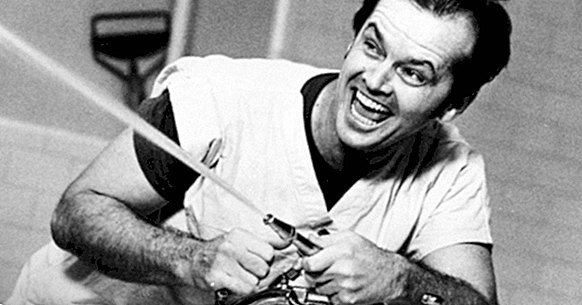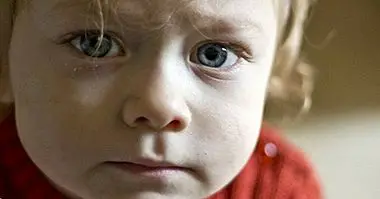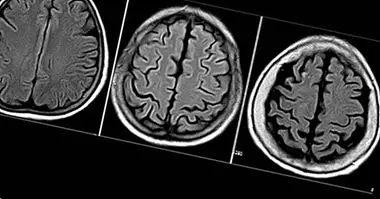Antipsychiatry: history and concepts of this movement
During the twentieth century many psychiatric treatments for mental disorders were popularized, including some very questionable in an ethical and practical sense. The extreme medicalization of problems such as schizophrenia have had and continue to have, in a large number of cases, coercive components that are frequently criticized.
In this article we will talk about the history and the main expositions of the antipsychiatry movement , which emerged in the 60s to defend the individual rights of people with mental problems and draw attention to the methods and unequal power relationship present in the interaction between doctor and patient.
- Related article: "History of Psychology: authors and main theories"
History of the antipsychiatry movement
One of the most significant antecedents of the anti-psychiatry movement is the moral treatment, promoted by Philippe Pinel and Jean Esquirol in the XVIII century. The ideas of these authors must be framed in a context in which large numbers of people with mental problems were crammed into insane asylums and treated inhumanely.
Although moral treatment had some influence on the development of therapies for severe mental disorders, it also proposed restrictive and punitive methods. However, this precursor and other later ones are illustrative to understand that, since the beginning of psychiatry, this has been criticized for similar methodological and ethical reasons.
On the other hand, already in the 19th century it had become evident that the number of patients per psychiatrist in mental health institutions was very excessive; This is why the role of physicians often became more administrative than therapeutic. Although the general conditions have improved, this description is not strange in the present either.
During the 20th century, the perception of psychiatry as a discipline that dehumanized people with mental problems . The emergence of the DSM and CIE diagnostic classifications contributed to the labeling of those who sought treatment, putting the disorder-after all, a social construct-in front of the person.
- Maybe you're interested: "Shutter Island: a brief psychological vision of the movie"
Emergence of this phenomenon
Between the 1930s and 1950s very aggressive medical procedures became popular in the United States, such as electroshock (which at that time caused serious side effects) and lobotomy, which consisted of cutting the frontal lobe connections.
Also in the 50s appeared chlorpromazine, the first widely used antipsychotic. Despite the severe adverse reactions associated with its use, this and other moderately effective and not too safe drugs continued to be developed and used massively. We refer to the so-called "golden age of psychotropic drugs".
In 1967 the psychiatrist David Cooper coined the term "antipsychiatry" to give name to the movement of which it was a part, and that at this point had an international reach, whereas previously it had been quite specific of the Anglo-Saxon world. Many professionals now adhered to the movement, influenced in a key way by Marxism.
In the following decades the brief unity of the antipsychiatry was diluted, although similar demands arose with force around the rights of homosexual and transgender people , pathologized by the diagnostic classifications. The same can be said of other groups, such as people with functional diversity and severe mental disorders.
- Related article: "Types of psychotropic drugs: uses and side effects"
Main approaches
The classic approaches of the antipsychiatry movement were defined in the 60s by mental health professionals such as David Cooper, R. D. Laing, Theodore Lidz, Ernest Becker, Silvano Arieti, Thomas Scheff or Erving Goffman. The contributions of these authors are not always coincident; an especially controversial case is that of Thomas Szasz.
In general, the antipsychiatry movement advocates political action as a method to change the vision of the population, and especially of the institutional leaders, with regard to "mental disorders", which for those who adhere to this orientation constitute tools for the control of citizens, as they stigmatize and pathologize them.
As within any movement, there are notable theoretical differences between the promoters of antipsychiatry, which has significantly hindered their consolidation. In any case, a general coincidence is detected around the excessive medicalization of psychological problems and the potential dangers of diagnostic labels.
Among other arguments, the theorists of classical antipsychiatry argued that the behaviors and problems that were conceived as disorders were the result of certain social values, and not of the presence of pathological characteristics in themselves. A) Yes, the disorder can only be designated as such in relation to the sociocultural context .
Another of the traditional targets of the antipsychiatry movement was psychoanalysis, which was accused of frequently causing iatrogenic effects (that is, damaging the mental health of clients rather than improving it). The same can be said of many other therapies, particularly those whose efficacy has not been proven.
Antipsychiatry today
At present, the antipsychiatry movement is as current as it was 50 years ago, despite - or precisely because of - the clear predominance of medical interventions in the area of mental health. The opposition is strong in many patients and relatives, as well as in clinical psychology, hindered by systematic professional intrusion by psychiatry.
One of the areas where criticism is most intense is that of the medicalization of certain child behaviors , among which is the behavior pattern called Attention Deficit Hyperactivity Disorder, characterized by overdiagnosis and the long-term use of insufficiently studied stimulant drugs.
On the other hand, it is very worrying the growing power of large pharmaceutical corporations and its close ties with the political class, with the media and even with many members of the scientific community. All this generates understandable biases around the reliability of the drugs and the studies that support it.
As to severe mental disorders, such as schizophrenia and bipolar disorder , pharmacological and psychological treatment has improved in recent years, but many psychiatric institutions continue to use less recommendable procedures. Likewise, the stigmatization of these and other disorders will continue to contribute to less than ideal management.
- Maybe you're interested: "Bipolar disorder: 10 features and curiosities you did not know"




















